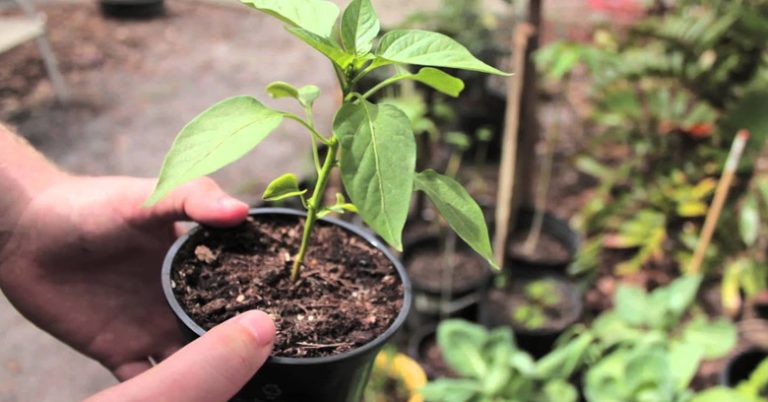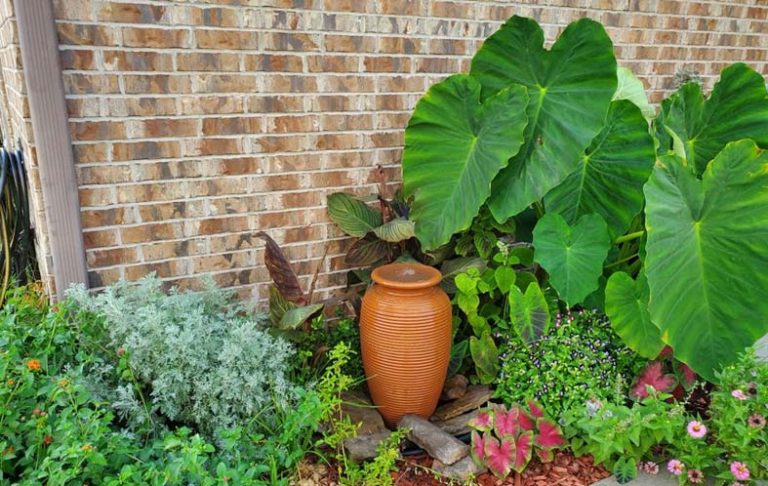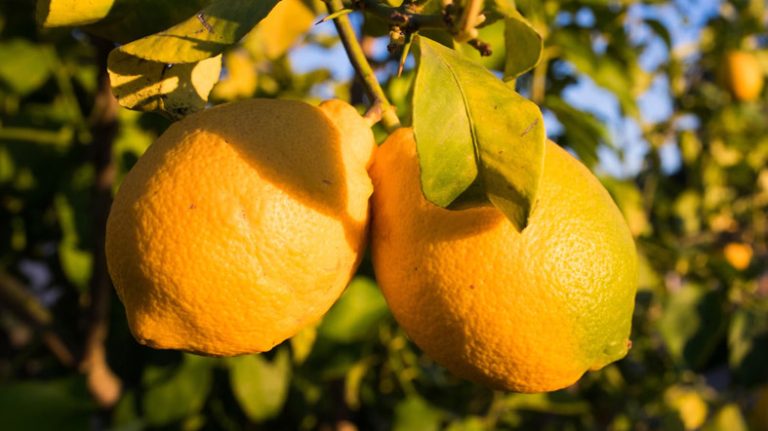Can Lilac Roots Damage Foundation | Read to Find Out
Lilac roots can potentially damage the foundation of a building. This is due to their invasive nature and ability to spread horizontally, causing structural issues if planted too close to the foundation.
Lilac bushes are beloved for their vibrant flowers and pleasant fragrance. However, it is important to consider the potential impact of their roots on the foundation of a building. The roots of lilacs have a tendency to spread horizontally and can penetrate cracks in concrete, causing structural problems.
When these roots grow too close to the foundation, they can disrupt the stability of the building. It is therefore recommended to plant lilacs at a safe distance from the foundation or use root barriers to prevent any potential damage. Taking these precautions will help preserve the integrity of the structure while still enjoying the beauty of lilac bushes.

Understanding The Impact Of Lilac Roots On Building Foundations
Lilacs, with their vibrant and fragrant blooms, are a beloved addition to many gardens. However, what many homeowners fail to realize is that these beautiful shrubs can potentially pose a threat to the stability of their building foundations. Understanding the impact of lilac roots on foundations is crucial in order to prevent any potential risks and ensure the long-term structural integrity of your home.
In this section, we will explore the potential risks, consequences, and importance of assessing and managing the impact of lilac roots on building foundations.
Discuss The Potential Risks And Consequences Of Lilac Roots Damaging Foundations
Lilac roots have the potential to cause significant damage to building foundations. Below are the key points to highlight:
- Expansion and contraction: As lilac roots spread underground in search of water and nutrients, they can exert pressure on the surrounding soil. Over time, this continuous expansion and contraction can lead to soil movement and create significant pressure on the foundation.
- Foundation cracks: The pressure exerted by lilac roots can cause foundation cracks. These cracks not only compromise the structural integrity of the building but also provide entry points for water and pests, potentially leading to even more severe damage.
- Uneven foundation settlement: When lilac roots grow near the foundation, they can create an uneven settlement, causing one part of the foundation to sink more than the rest. This can result in an uneven structure, leading to cracked walls, doors that stick, and other structural issues.
- Damage to water pipes: Lilac roots can infiltrate underground pipes, including water and drainage lines. As they grow and expand within the pipes, they can cause blockages, leading to backups, leaks, and costly repairs.
Highlight The Importance Of Assessing And Managing The Impact Of Lilac Roots On Foundations
Assessing and managing the impact of tree roots, including lilacs, on building foundations is of utmost importance to maintain the structural integrity of your home. Here are the key points to consider:
- Regular inspections: Regularly inspect your property to identify the proximity of lilacs or other trees to your foundation. Early detection can help prevent potential damage and allow for prompt action.
- Root barrier installation: Installing a root barrier between the lilac and the foundation can act as a protective barrier, preventing the roots from reaching the foundation and causing damage.
- Proper pruning: Pruning lilac roots can help control their growth and minimize the risk of them reaching the foundation. Consult with a professional arborist to determine the best pruning techniques and timing.
- Foundation waterproofing: Consider waterproofing your foundation to protect it from excessive moisture. This can help prevent the weakening of the foundation caused by moisture accumulation.
- Regular maintenance: Implementing a routine maintenance plan for your foundation, which includes monitoring the proximity of lilac roots and addressing any signs of damage promptly, can help prevent further deterioration.
Nature Of Lilac Roots: How They Interact With Foundations
Lilac plants are a popular choice for gardens and landscapes due to their beautiful and fragrant blossoms. However, many homeowners are unaware of the potential damage that lilac roots can cause to the foundation of their houses.
In this section, we will explore the characteristics of lilac roots and how they interact with foundations.
Overview Of Lilac Plants And Their Root Systems
Lilac plants, scientifically known as syringa, are deciduous shrubs or small trees native to Asia and europe. They are well-loved for their clusters of vibrant flowers in various shades of purple, pink, and white. These plants can reach a height of 6 to 15 feet and have an extensive root system that spreads out in search of water and nutrients.
Explanation Of How Lilac Roots Grow And Spread
Lilac roots start as tiny, delicate root hairs that emerge from the main root. As the plant grows, the roots elongate and branch out, forming a network underground. They can extend horizontally up to three times the height of the lilac plant itself.
This extensive root system allows the plant to access water and nutrients over a large area.
Discuss The Specific Characteristics Of Lilac Roots That Make Them Potentially Damaging To Foundations
- Aggressiveness: Lilac roots are known for their aggressive nature, seeking out moisture and nutrients. This aggressiveness may lead them to grow into unwanted areas, including the vicinity of foundations.
- Size and strength: Lilac roots can become large and strong over time, exerting pressure on nearby structures, such as foundations. As they grow, they can cause the soil to expand and contract, leading to potential cracks and damage.
- Dehydration of soil: Lilac roots have a high demand for water, and in their quest for moisture, they can draw out significant amounts from the surrounding soil. This can lead to soil shrinkage and settlement, which can adversely affect the stability of foundations.
- Proximity to the foundation: Lilac plants are often planted close to houses and buildings for aesthetic purposes. Unfortunately, this proximity increases the likelihood of the roots encountering the foundation. When in contact with the foundation, the roots can penetrate small cracks and openings, exacerbating the damage.
- Invasive potential: Lilac plants can produce suckers, which are shoots that emerge from the roots. These suckers have the potential to spread rapidly, forming new plants. If left uncontrolled, the invasive growth of lilac roots can further increase the risk of foundation damage.
Potential Risks And Warning Signs Of Lilac Root Damage To Foundations
Lilacs are beautiful flowering plants that add charm and fragrance to any garden. However, their extensive root systems have the potential to cause damage to nearby structures, including foundations. To ensure that your home is safe and secure, it’s crucial to be aware of the signs of lilac root damage.
Here are some key points to keep in mind:
- Cracks in the foundation: Look out for cracks, especially vertical ones, in your home’s foundation. These can be an indication that the lilac roots are exerting pressure and causing structural damage.
- Uneven floors: If you notice that your floors are no longer level or have started to slope, it could be a sign that the foundation has been affected by lilac roots.
- Sticking doors and windows: When a foundation shifts due to root damage, it can cause doors and windows to become misaligned and no longer open or close smoothly.
- Moisture issues: Lilac roots have a tendency to search for water sources, and if they find a crack in your foundation, they may exploit it to access water. As a result, you may notice excessive moisture or dampness in your basement or crawl space.
Discussing How To Identify If Lilac Roots Are Affecting The Foundation
Identifying whether lilac roots are impacting your foundation is crucial for taking timely preventive measures. Here are the key points to consider when evaluating the influence of lilac roots on your home’s foundation:
- Visual inspection: Conduct a thorough examination of the area around your foundation. Look for signs of roots protruding from the ground or any other visible damage caused by the lilac roots.
- Consulting a professional: When in doubt, it’s best to consult with a foundation specialist or an arborist who can assess the situation and provide expert advice.
- Conducting a root inspection: Root inspections can be done by excavating the soil near the foundation. This allows you to examine the condition, size, and trajectory of the lilac roots.
Explaining The Potential Risks And Long-term Consequences Of Untreated Lilac Root Damage
Ignoring lilac root damage to your foundation can have severe implications for the structural integrity of your home. It’s crucial to be aware of the potential risks and long-term consequences that can arise from untreated lilac root damage. Here are some key points to consider:
- Structural instability: Lilac roots can weaken the foundation over time, leading to significant structural instability. This can make your home vulnerable to further damage in the event of natural disasters or shifting soil.
- Costly repairs: Repairing a damaged foundation can be a costly endeavor. Without prompt action, the damage caused by lilac roots can worsen, leading to more extensive repairs and a higher financial burden.
- Decreased property value: Foundation issues are a red flag for potential homebuyers. Untreated lilac root damage can significantly decrease your property’s value and make it challenging to sell in the future.
- Safety hazards: As the foundation becomes compromised, it can lead to safety hazards within your home. Uneven floors, cracking walls, and sticking doors and windows pose a risk to the well-being of you and your family.
Managing And Preventing Lilac Root Damage To Foundations
Lilac bushes can add beauty and fragrance to any garden, but their roots can sometimes pose a threat to the foundation of your home. If left unmanaged, lilac root damage can cause structural issues and costly repairs. Fortunately, there are proactive measures you can take to prevent such damage and protect your foundation.
Providing Proactive Measures To Prevent Lilac Root Damage:
- Choose the right location: When planting lilac bushes, make sure to select a location that is at a safe distance from your home’s foundation. Placing them too close can increase the risk of root intrusion.
- Install root barriers: Consider installing root barriers around your foundation to act as a physical barrier that prevents lilac roots from growing near the foundation. These barriers are typically made of durable materials like metal or plastic.
- Regular maintenance: Proper maintenance is essential in preventing lilac root damage. Regularly inspect your landscape for signs of root growth near the foundation and take appropriate action promptly.
Highlighting The Importance Of A Professional Assessment And Consultation For Managing Lilac Root Impact:
- Consult a professional: If you suspect lilac roots are affecting your foundation, it is crucial to seek professional help. A qualified arborist or foundation specialist can assess the situation, identify potential risks, and provide tailored solutions.
- Comprehensive evaluation: A professional assessment will help determine the extent of the damage and develop an effective plan for managing the lilac root impact. This evaluation takes into account factors such as soil conditions, proximity to the foundation, and the health of the plants.
- Expert recommendations: Professionals can offer expert recommendations to safeguard your foundation against lilac root damage. They may suggest measures like selective root pruning or alternative landscaping options that minimize the risk.
Discussing Potential Solutions And Mitigation Strategies To Protect Foundations From Lilac Roots:
- Root pruning: Strategic pruning of lilac roots can redirect their growth away from the foundation. Ideally, this task should be performed by trained professionals to avoid accidentally damaging the plant.
- Plant relocation: If lilac root damage is already a concern, transplanting the bushes to a safer location might be necessary. However, this approach should be undertaken with caution to ensure the lilac can adapt and thrive in its new environment.
- Diversion techniques: Employ diversion techniques to steer lilac roots away from the foundation. This can involve installing subterranean barriers or creating an intentional landscape design that encourages root growth away from the home.
Case Studies: Real-Life Examples Of Lilac Root Damage To Foundations
Lilac bushes are known for their beauty, fragrance, and vibrant colors. However, beneath their captivating exterior lies the potential for damage to our home’s foundation. To shed light on this issue, let’s explore some real-life examples of lilac root damage to foundations.
Example 1: The Invasion
A homeowner planted a lilac bush near their foundation, unaware of the potential consequences. Over the years, the roots spread relentlessly, infiltrating the foundation and causing cracks to appear. The house became structurally compromised, leading to costly repairs and significant stress for the homeowner.
Example 2: The tight squeeze
In another case, a lilac bush was planted in close proximity to an existing foundation. As the roots grew thicker, they entwined with the foundation walls, creating pressure and pushing against the structure. The resulting damage required immediate action to prevent further harm.
Discussing The Challenges Faced And The Solutions Implemented In Each Case
In dealing with the challenges presented by lilac root damage, homeowners encountered various obstacles. However, with determination and the right approach, they managed to find solutions. Let’s delve into their experiences.
Example 1: Identifying the problem
The homeowner in the first case faced the initial challenge of understanding the root cause of the foundation cracks. After thorough investigation and consultation with experts, they discovered the hidden lilac roots as the culprits.
Example 2: Mitigation and removal
The second case presented a situation where the lilac roots had already intertwined with the foundation walls. The homeowner sought professional assistance to carefully remove the bush and, subsequently, eradicate the pesky roots with precision.
Highlighting The Lessons Learned And The Importance Of Early Detection And Prevention
Through these real-life scenarios, we can draw valuable lessons about lilac root damage and its impact on foundations. Consider the following points:
- Early detection is key:
- Timely identification of lilac root intrusion can prevent extensive damage to your home’s foundation. Regular inspections and awareness of potential risks can be crucial in mitigating the problem.
- Strategic planting:
- Before planting a lilac bush, conduct research to determine appropriate distances from your home’s foundation. Understanding the growth pattern and potential root system can help prevent future damage.
- Professional guidance:
- If you suspect lilac root damage or need advice on prevention, consult with experts in landscaping and foundation repair. Their knowledge and experience can provide valuable insights tailored to your specific circumstances.
FAQs – Frequently Asked Questions and Answers
How Do Lilac Roots Damage Foundations?
Lilac roots can damage foundations by exerting pressure, causing cracks and instability. As the roots grow aggressively, they can penetrate the foundation walls or lift them, leading to structural problems. Moisture-seeking roots may also cause leaks in basement walls or slab foundations.
What Are The Signs Of Lilac Root Damage To Foundations?
Signs of lilac root damage to foundations include cracks in walls or floors, uneven or sinking areas, doors, and windows becoming misaligned, and water infiltration in the basement. These signs may indicate foundation movement due to aggressive root growth. Promptly addressing these issues can prevent further damage and maintain the structural integrity of the building.
How far away should I plant lilac bushes from my foundation?
It’s recommended to plant lilac bushes at least 5 to 10 feet away from your foundation. This distance helps ensure that the roots won’t exert excessive pressure on the foundation, reducing the risk of damage over time.
What kind of damage can lilac roots cause to a foundation?
In rare cases, if lilac roots are allowed to grow too close to a foundation, they might contribute to issues like minor cracks or shifts. However, lilac roots are not known for causing significant foundation damage compared to other types of trees or plants with more aggressive root systems.
Can lilac roots affect underground utilities or pipes near the foundation?
Lilac roots are unlikely to cause damage to well-installed underground utilities or pipes. However, it’s important to be cautious and avoid planting any vegetation too close to these areas to prevent potential future complications.
Conclusion
It’s important to understand the potential impact of lilac roots on your foundation. While lilacs are beautiful and fragrant, their root systems can be quite strong and tenacious. These underground structures have the potential to spread far and wide, searching for water and nutrients.
If they encounter your foundation, they can exert pressure and cause damage over time. It’s crucial to proactively manage your landscaping and take necessary precautions to prevent any harm. Regularly inspecting the area around your foundation for signs of root intrusion, maintaining adequate distance between lilacs and the foundation, and implementing root barriers are among the effective measures to safeguard your foundation.
Remember, prevention is always better than expensive repairs and potential structural issues down the road. By following these steps, you can continue to enjoy the beauty of lilacs without worrying about their impact on your home’s foundation.

![Why Are My Basil Leaves Curling [Causes and Solutions]](https://gardensuggest.com/wp-content/uploads/2023/09/Why-Are-My-Basil-Leaves-Curling-768x432.webp)



